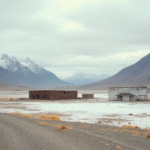Introduction
As the 2026 FIFA World Cup approaches, set to be hosted by Canada, Mexico, and the United States, players and teams must prepare for unique challenges posed by the tournament’s conditions. David Silva, a former Spanish national team champion in 2010 and an experienced player in international competitions, shares his insights on how teams can adapt to these conditions.
Climate and Altitude
Challenges:
- High temperatures in many host cities, especially in Mexico and the United States
- Altitude differences between venues in Mexico (Guadalajara, Monterrey, and Mexico City) which are above 500 meters above sea level
Silva’s Perspective:
Silva emphasizes the importance of early preparation to adapt to these conditions. He notes that while altitude and climate may present difficulties, teams must arrive early to acclimate. He recalls the 2010 World Cup in South Africa, where temperatures averaged around 14°C, enabling Spain to win the tournament. Conversely, in Brazil 2014 with average temperatures exceeding 25°C, Spain struggled to advance past the group stage.
Norwegian Preparation
Norway, with an average temperature between 17°C and 21°C, is another nation that may need to prepare for drastically different conditions if they qualify. Silva believes that all teams will adapt, as evidenced by the 2022 Club World Cup in the United States where teams from various climates managed to compete.
Travel and Schedule
Challenges:
- Long travel distances between host cities in Mexico, the US, and Canada
- The grueling schedule of the 2025-26 season, particularly in European football
Silva’s Perspective:
The 2026 World Cup will feature the longest travel distances in tournament history, with the maximum distance between two host cities exceeding 4,700 kilometers (Vancouver to Mexico City). Silva acknowledges the challenge of managing player fatigue and jet lag, advocating for better player care to ensure their well-being and peak performance.
Player Welfare
Silva highlights the increasing number of matches and competitions leading to more injuries. He stresses the need for improved player care, ensuring that athletes are well-rested and ready to perform at their best despite the demanding schedule.
Key Questions and Answers
- What is essential for a team to become a favorite in the World Cup?
Silva: A strong team dynamic is crucial, but ultimately, the quality and characteristics of individual players determine success. Balancing team cohesion with the realities of a shorter preparation period for national teams is key.






